Atlantic Cod
Gadus morhua
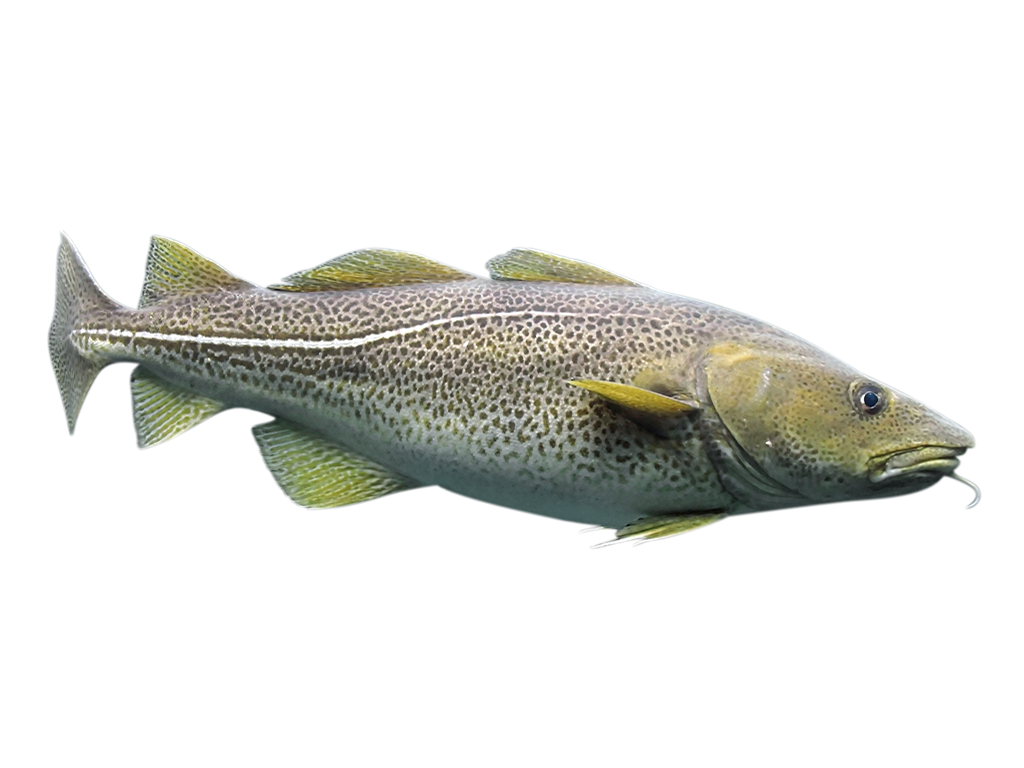
Barbel as sensory organ
Can you see the cod’s chin barbel? It is characteristic of the cod and functions as a sensory organ. The cod’s colour varies with its environment. Each cod has a marble pattern that is unique to the individual, like a fingerprint. The cod becomes sexually mature between two and six years of age, and a female can lay up to 5 million eggs during the spawning period. The largest cod ever caught weighed 60 kilograms.
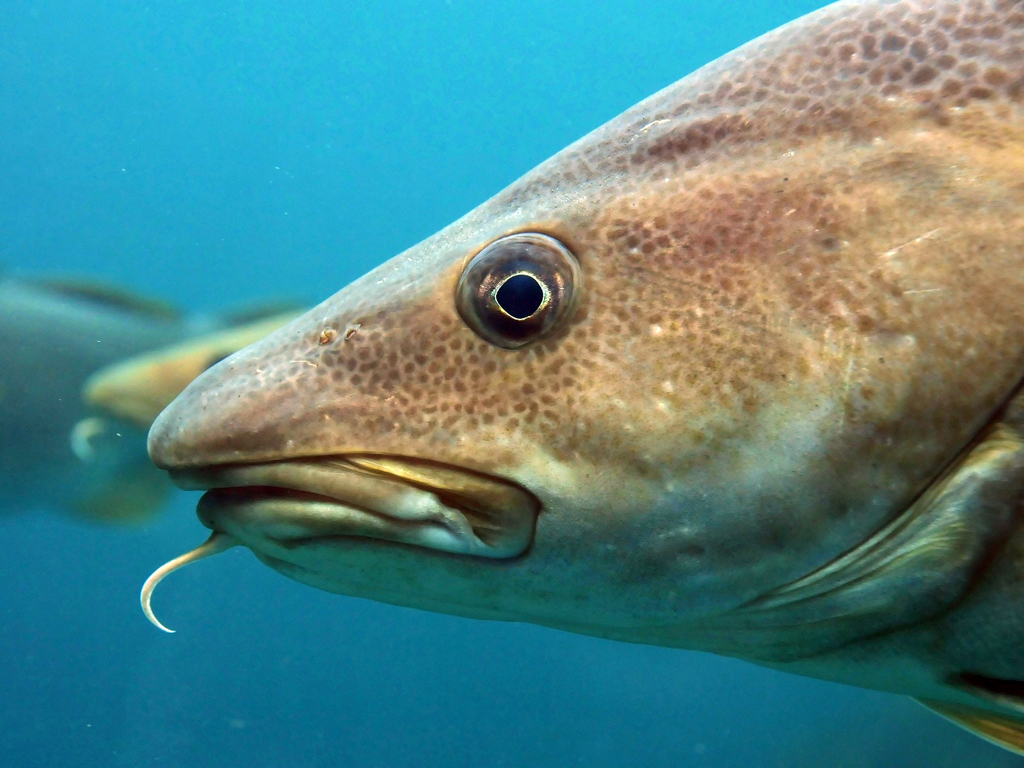
Photo: Joachim-S.-Müller-CC-BY-NC-SA
Endangered predator
The Atlantic cod is a very important species to the fishing industry because many people enjoy it as a food fish. The cod is a predator, and because it is found at the top of the food chain the entire food chain is affected when the cod is fished too extensively.
When the cods decrease in number, they cannot eat as many bristling, herring and other smaller fishes, which means more of these are left alive to eat zooplankton. That means less zooplankton, and they can in turn not eat as much phytoplankton as when the food chain is in equilibrium.
And large quantities of phytoplankton mean algae blooms, i.e. a massive growth of planktonic algae. Algae blooms in turn threaten all sorts of marine life because they cause oxygen depletion in the water and can poison several species.
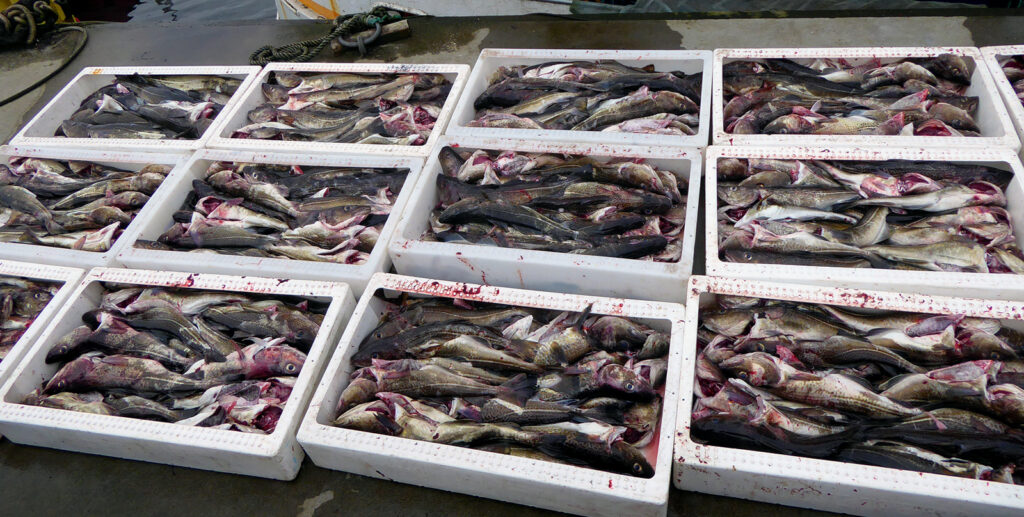
Photo: Jonn-Leffmann-CC-BY
A catastrophe in the Kattegatt
The number of cods has decreased in many places. For example, in the south and mid Baltic, it has decreased by 75 %. And in the Kattegat, many people say that the situation is catastrophic as estimations show that there are fewer cod there than ever before. The cod is more threatened in Scandinavia than in the rest of the world.
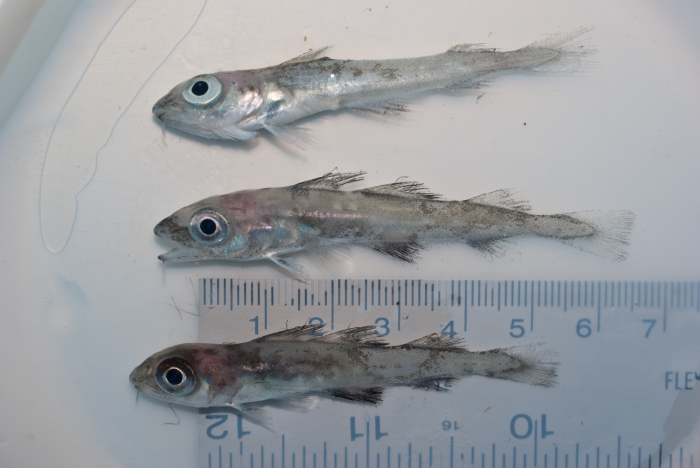
Photo: Nozères-Claude-CC-BY-NC-SA
What can I do to help the Atlantic cod?
The most important thing anyone can do is to influence political decisions to improve the situation in the world’s oceans. You can participate in protests or demonstrations, become politically involved, or join an organisation that is trying to change the politicians’ view on marine matters – such as the Swedish Society for Nature Conservation or the World Wildlife Foundation (WWF).
You can stop eating and buying fish and shellfish that are endangered or threatened. Choose fish with the MSC label, which is an international label for sustainable fishing. Choose fish with the KRAV label when you buy farmed fish.
Ask for fish that is not endangered or threatened when you are at a restaurant or in a grocery store.
Distribution in Sweden
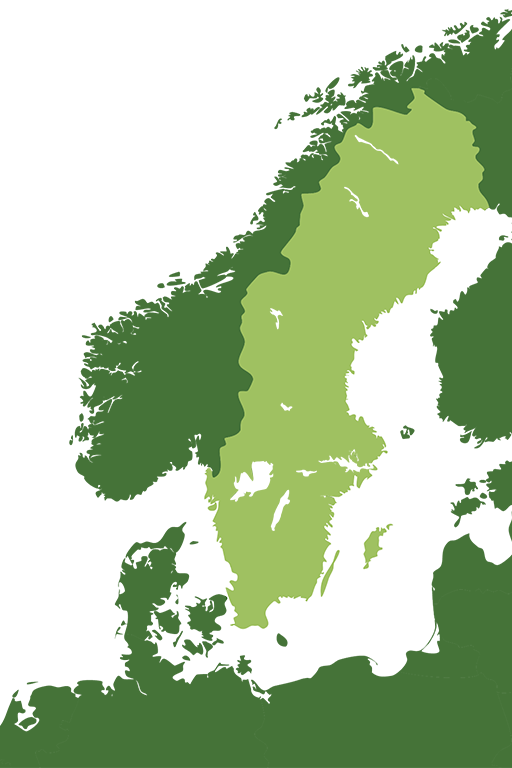
Skagerak, Kattegatt and the Baltic Sea.
White marking = Distribution
Threat based on the Red List

Trade regulations
CITES: Not listed.